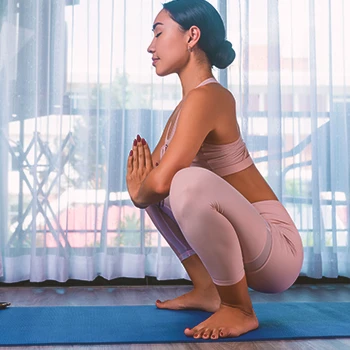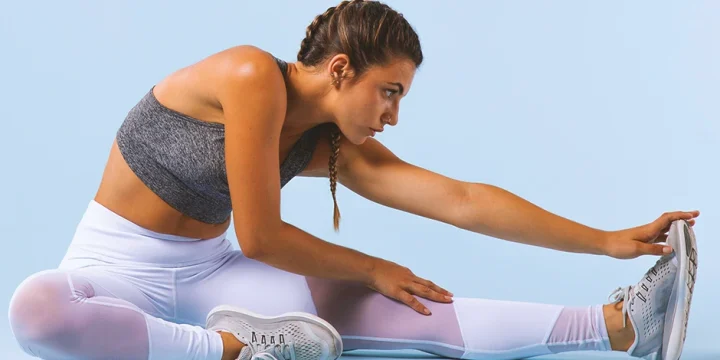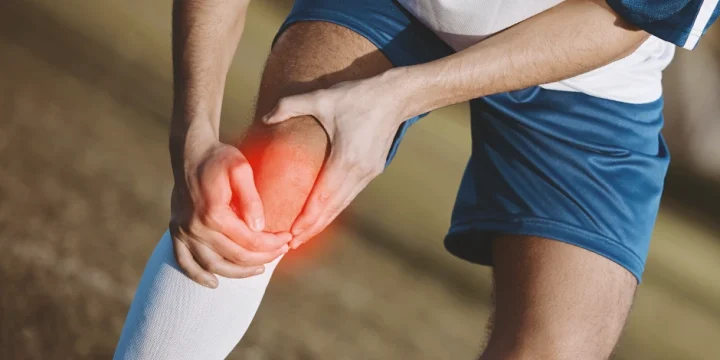A groin strain is a prevalent issue among fitness enthusiasts, typically located where the upper thigh and abdomen meet.
Groin pain can stem from various causes, including weak adductor muscles and strains or pulls.
After several months of research, I have compiled a collection of effective stretches that can be performed at home to ease groin pain.
Furthermore, I will outline the benefits of incorporating stretching exercises when recovering from a groin injury.
Quick Summary
- The best groin stretches include the standing groin stretch, butterfly stretch, frog stretch, fire hydrant, cossack squat, and wide-leg forward bend.
- Symptoms of a pulled groin muscle include pain in the groin and inner thighs, discomfort during leg adduction and knee movement, warmth in the affected area, and the possibility of bruising or swelling in the groin region or inner thigh.
- According to studies published by the International Health Journal, stretching exercises are known to promote enhanced blood flow, which could potentially accelerate the recovery process from a groin injury.
- Based on my years of training, I've observed that diligent groin stretching can be a key factor in preventing common lower-body injuries.
6 Top Groin Stretching Exercises

1. Standing Groin Stretch Exercise
In my experience as a fitness trainer, I've found this stretch to be particularly effective for clients who sit for long periods during the day.
How to do this groin stretch:
- Stand with your legs wide apart.
- Transfer your body weight onto your right leg and gradually lower yourself into a side lunge. Make sure to go as deep as is comfortable for you. Keep your left leg straight.
- Keep an upright posture with your upper body while holding this position for fifteen to thirty seconds.
- Return to the starting position and repeat the same on your other leg.
2. Butterfly Stretch
How to perform this inner thigh and groin stretch:
- Get into a seated position with the soles of your feet pressed together. Keep your posture upright throughout the whole exercise.
- Find a comfortable range of motion as you gently bring your knees closer to the ground, feeling a gentle stretch in your inner thighs.
- Engage your muscles and slightly lean forward from your hips.
- Grasp your feet with your hands and raise your toes off the ground.
- Hold for fifteen to thirty seconds.
“As you become more flexible, you can get a deeper stretch of the hips and back by leaning forward at the waist. Exhale and lean forward, keep your back flat and allow your chest to fall as close to the floor as possible.”
- Elizabeth Quinn, Exercise Physiologist
3. Frog Stretch

I remember working with a group of clients who were avid cyclists. They often complained about groin stiffness. After introducing the frog stretch into their post-cycling routine, they noticed a marked improvement in flexibility and reduced discomfort.
How to perform a frog stretch:
- Get on all fours with your wrists under your shoulders
- Open your legs as wide as possible, stretching them out to the sides.
- Lean back as slowly as possible, allowing your glutes to get closer to the ground.
- Hold for fifteen seconds, feeling a stretch in your inner thighs and groin muscles.
- Lean forward while engaging your core muscles. You may place your elbows on the ground to deepen the stretch.
- Hold for fifteen seconds.
4. Fire Hydrant
How to perform a fire hydrant exercise:
- Get down on all fours.
- Lift one leg slightly backward and to the side while keeping your knee bent at a 90-degree angle. Focus on using your hip muscles to perform the movement, avoiding any rotation in your spine.
- Continue this motion for fifteen to thirty seconds, feeling the activation in your hip muscles.
- Lower your leg back to the initial position.
- Repeat the same movement on the opposite side, raising the other leg backward and to the side while maintaining core stability.
5. Cossack Squat

This exercise is particularly beneficial in sports like soccer and gymnastics, where groin flexibility is crucial. Tailoring groin stretches to specific sports can enhance performance and reduce injury risk in those activities.
How to do this hip flexor stretch:
- Stand with your feet facing forward, slightly wider than hip-width apart.
- Transfer your weight onto your left foot, allowing your right foot to rotate and lift off the ground.
- Lower your hips towards the ground as if you are almost sitting down. Keep your chest lifted and your back straight throughout the movement.
- Hold for fifteen to thirty seconds.
- Push back up to the starting position.
- Repeat on the other side.
- Hold for fifteen to thirty seconds.
“If you lack flexibility in your hips, your torso will want to come forward and your lower back will want to arch as you drop down into the cossack squat movement. Resist this by only lowering down as far as your flexibility allows. You can also place your hands on the ground in front of you.”
- Nicole Davis, Personal Trainer
6. Wide-Leg Forward Bend
How to perform wide-leg forward bends:
- Stand with your feet shoulder-width apart and your abdominal muscles engaged.
- Take a large step back with your right foot, aligning both feet parallel. Position your toes inward and your heels outward.
- With your hands resting on your hips, draw your elbows toward each other.
- Slowly begin to fold forward from the hips while keeping a long and straight spine.
- Lower your hands to the floor beneath your shoulders, slightly bending your knees if necessary. Keep your spine extended and draw your abdomen inward.
- Hold for fifteen to thirty seconds.
In addition to these exercises, incorporating nutrition-focused strategies, such as consuming anti-inflammatory foods and staying hydrated, can further enhance muscle recovery and flexibility. This holistic approach ensures not only immediate relief but also long-term health of the groin muscles.
What Are the Benefits of Adding Groin Stretches to Your Routine?

The benefits of adding groin stretching to your routine are reduced pain, reduced injury risk, improved groin mobility, and improved range of motion.
From my experience, clients who regularly perform these stretches tend to recover faster from groin-related injuries.
- Reduced groin pain - Research by the British Journal of Sports Medicine has demonstrated that adductor and abdominal strengthening exercises yield better results in terms of alleviating groin pain, surpassing the effectiveness of passive physical therapy methods such as laser therapy and electric nerve stimulation [1].
- Increased blood flow - Stretching exercises have been shown by studies published by the International Heat Journal to promote enhanced blood flow, potentially accelerating the recovery process from a groin injury [2].
- Improved range of motion - Studies by the Journal of Functional Morphology and Kinesiology have shown that stretching exercises may improve the range of motion, which can help alleviate pain by reducing muscle stiffness [3].
- Decreased risk of future injury - Individuals may experience a reduced risk of future groin injuries by maintaining muscle flexibility through a consistent stretching routine. This is because regular stretching helps lengthen the muscles and enables them to adapt more effectively to sudden movements.
- Enhanced mood. Regular groin stretching can have a positive impact on mental health, reducing stress and enhancing mood, which is a vital aspect of overall wellness often overlooked in physical training
Related Posts:
FAQs
Is It Good to Stretch a Strained Groin?
Yes, it is good to stretch a strained groin, but it is important to seek help from a physical therapist if you encounter pain or discomfort while performing a stretching exercise.
What Causes a Tight Groin?
Muscle imbalances, lack of flexibility, poor posture, groin juries, lack of proper rest, and aging cause a tight groin.
What Are the Symptoms of a Pulled Groin Muscle?
The symptoms of a pulled groin muscle are pain in the groin area and inner thighs, pain during leg adduction, pain when raising your knee, warmth in the groin, or bruising or swelling in the groin area or inside the thigh.
References:
- https://www.ncbi.nlm.nih.gov/pmc/articles/PMC4484372/
- https://www.jstage.jst.go.jp/article/ihj/54/2/54_59/_article
- https://www.mdpi.com/2411-5142/8/2/37
About The Author
You May Also Like






